Showing 145–156 of 314 results
-
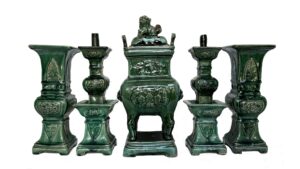
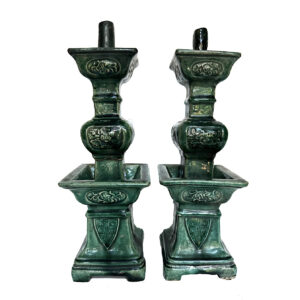
$2,950.00
This 5-piece apple green glazed stoneware home altar set includes a central large censor flanked by rising pairs of candlestick holders and vases. These folk art ceramics were made at the Shiwan kilns in a small town near Foshan City in Guangdong Province where renowned, popular and well modeled pieces with vivid expression and colorful…
-
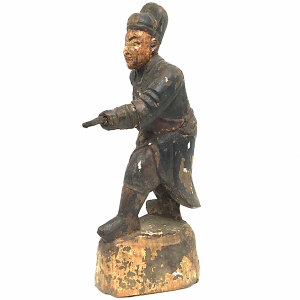
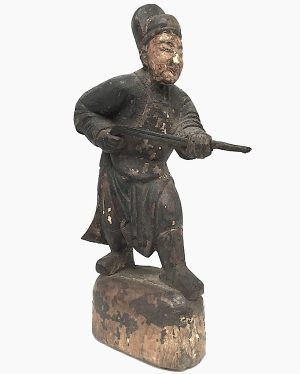
$315.00
The Keith Stevens’ article “An Unusual and Extraordinary Ancestral Image” describes a similar figure of a huntsman with a weapon, a flintlock gun, which he stated was the only ancestral image in his vast collection which “depicts the calling of the deceased.” (Stevens, Journal of Hong Kong) His piece was from Hunan, South Central China,…
-
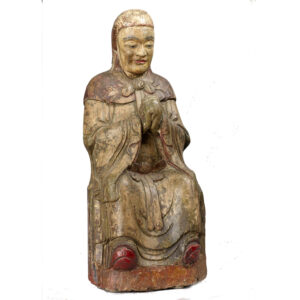
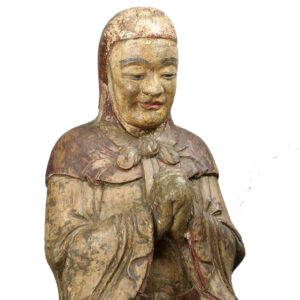
$7,300.00
Lohans are the only enlightened Buddhist beings that were allowed to be portrayed realistically rather than as idealized representations. This beautifully crafted antique and very rare large image looks like a portrait of a real person with very individual, distinctive, and un-idealized features. His eyebrows curve above a wide triangular nose with well pronounced cheekbones,…
-
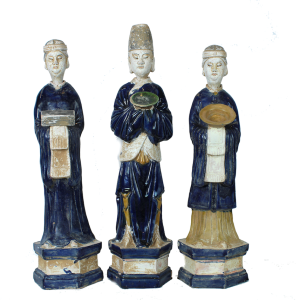
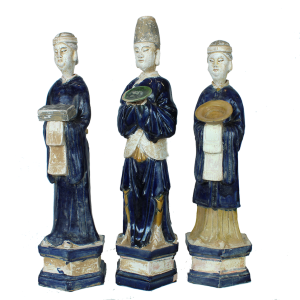
-

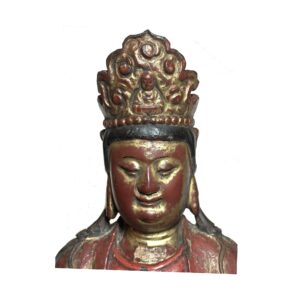
$3,995.00
This exceptional carving is form of Nanhai Guanyin which means Guanyin of the Southern Seas, one her most portrayed of her 33 manifestations during the Ming and early Qing dynasties. Her pedestal with hanging foliage and base in the form of stones indicates she is seated on her rocky outcrop on Putuo island in the…
-
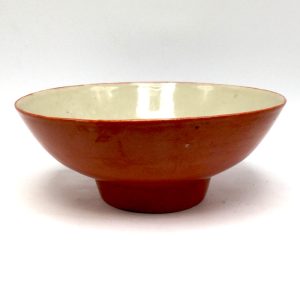
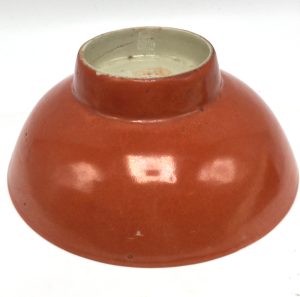
$125.00
Although the Chinese had been making a red glaze since the Song Dynasty, Qing dynasty potters developed several new and interesting glazes including a low-fired red coral glaze (shan hu hong) with a slight yellow tinge resembling red coral. It first appeared during the Kangxi Reign (1654-1722) and was used for dishes, bowls and vases as…
-
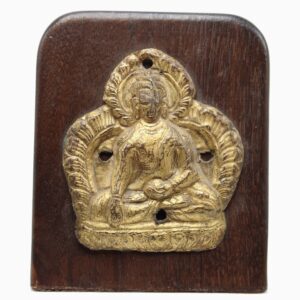
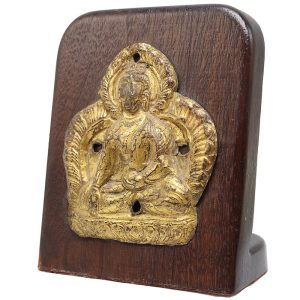
$595.00
This Tibetan Repoussé image presents various symbols of the Enlightenment of the Shakyamuni-Buddha. He sits within a trefoil arch on a lotus base (padmapitha) under the bodhi tree in bhumisparsha mudra (earth witnessing or hand touching position) symbolizing the moment of his enlightenment legs bent in (padmasana). The detailed trefoil arch surrounding the Buddha’s head…
-
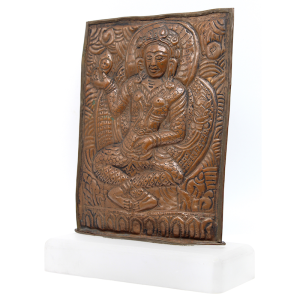
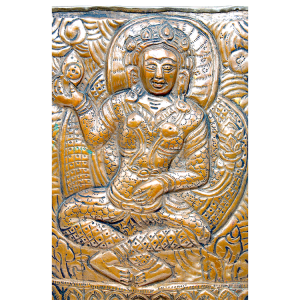
$250.00
Most Hindus have images of one or more murtis (gods and goddesses) on their home altar to help them in their daily prayers (puja), focus their attention and help visualize them. A murti is treated with the utmost respect, care and reverence but devotees never worship the objects and instead use them used only to…
-
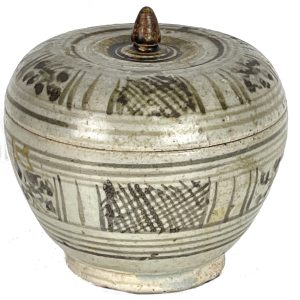
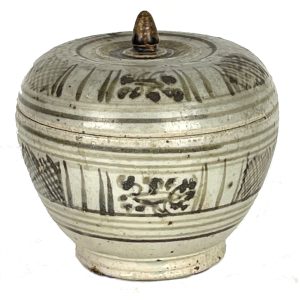
$295.00
Sawankhalok in north-central Thailand is an area with great amounts of ceramic kiln production during the Sukhothai Kingdom (1238-1583). When Ming emperors forbade export of Chinese ceramics from 1368-1487, a period known as the Ming Gap, Thailand became a major ceramics producer and exporter to Southeast Asia, Japan and the Middle East. During the 14th…
-
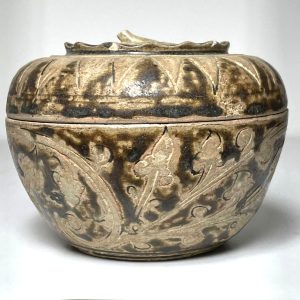
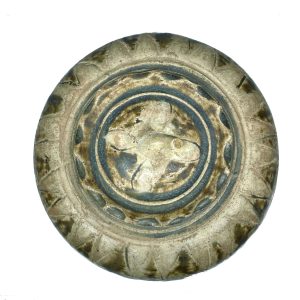
$385.00
Sawankhalok in north-central Thailand is an area that had a large ceramic kiln production during the Sukhothai Kingdom (1238-1583). When Ming emperors forbade export of Chinese ceramics from 1368-1487, known as the Ming Gap, Thailand became a major ceramics producer and exporter to Southeast Asia, Japan and the Middle East. During the 14th and 15th…
-
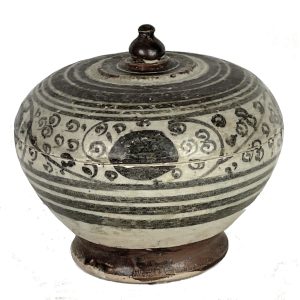
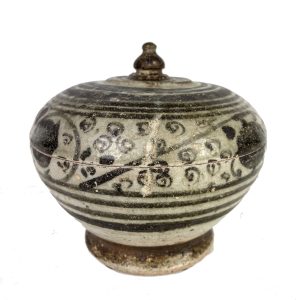
$325.00
Sawankhalok in north-central Thailand is an area with ceramic kiln production during the Sukhothai Kingdom (1238-1583). When Ming emperors forbade export of Chinese ceramics during 1368-1487, a period known as the Ming Gap, Thailand became a major ceramics producer and exporter to Southeast Asia, Japan, and the Middle East. During the 14th and 15th centuries,…
-
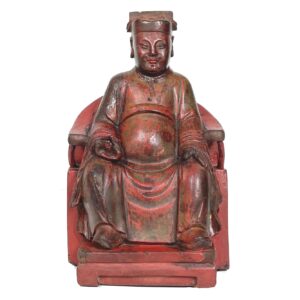
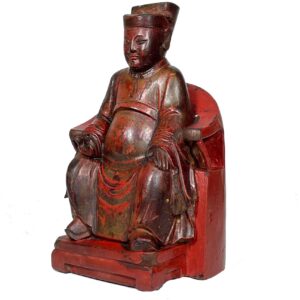
$650.00
During the Qing Dynasty Chinese officials were so significant that families often sought to portray an ancestor as an official in carved and painted images. This image reflects many of the common characteristics of ancestor-figures discussed by Stuart and Rawaski who write that ancestors were portrayed these official as if they are deities or rulers …
End of content
End of content
























